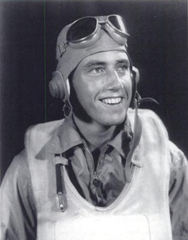MERSHON-MARVELLE
MARVELLE WILLIAM "MARVE" MERSHON

ARM3

KILLED AND CANNIBALIZED
WHILE A POW OF THE JAPANESE
Chichi Jima Island is 620 miles south of Tokyo and part of the Bonin Island Group. The island is small, only five miles by three miles in size but during World War II the island was critical to the Japanese communications services who used it as a strategic radio relay link. Near the end of the war the island was defended by approximately 23,000 Japanese troops when the Navy began routine bombing raids to neutralize its defenses. Beginning in mid-1944, American aircraft carriers began launching missions to fly into the teeth of Chichi Jima’s lethal antiaircraft guns, somehow dodge the shells aimed at them, and release their bombs onto the reinforced concrete communications facilities on top of the island’s twin peaks. A gruesome incident on Chichi Jima that occurred late in the war was not revealed to the American public until 2003 and has become known as the Chichi Incident (or the Ogasawa Incident). In essence, Japanese soldiers reportedly tortured, killed and ate as many as eight American airmen being held as POWs – an act of cannibalism.
Unfortunately, Aviation Radioman Third Class Marvelle William Mershon was one of the victims of this horrific incident. He was born on August 21, 1925 in Long Beach, California, and graduated from Long Beach Polytechnic High School in 1943. Shortly thereafter Mershon joined the Navy, and following recruit training at San Diego, was trained as a naval air crewman and assigned to Torpedo Squadron Twelve. On February 18, 1945 a flight of TBM Avenger bombers departed the carrier USS Randolph to attack the radio facilities on Chichi Jima Island. The flight included TBM-3 BuNo 23637 Avenger on which ARM3 Mershon was the radioman. On arrival over the island the flight flew into very heavy antiaircraft fire and the TBM was shot down, making a water landing. Plucked from the sea by a Japanese soldier helped by a fisherman, Mershon was taken prisoner. Once on the island, he was tied to a tree for several hours while the island’s commander urged his troops to slap, punch and otherwise abuse the American.
Following the close of World War II, interrogation of Japanese who had served on Chichi Jima Island disclosed that on February 24, 1945, a ranking officer ordered that ARM3 Mershon be executed. Thus, he was reportedly marched to a freshly dug grave, blindfolded, and made to kneel for beheading by sword. A witness to the act later testified in a war crimes trial, “When the flyer was struck, he did not cry out, but made a slight groan.” Testimony at the war crimes trial revealed that the following day an order was made to include American flesh in a sake-fueled feast for officers at a Boshido Spirit Warrior Indoctrination which included the belief that the act imparted a part of the victim’s soul into the consumer. A Japanese medical orderly testified that Mershon’s liver and a piece of flesh from his thigh were prepared for eating.
Following the close of World War II, the remains of ARM3 Mershon were exhumed at Chichi Jima Island and reburied in 1948 at Santa Fe National Cemetery in Santa Fe, New Mexico. In 1947, after a war crimes trial in Guam, both the Japanese officer who ordered ARM3 Mershon’s death and the officer who executed him were found guilty of war crimes and executed by hanging. Although U.S. authorities became aware of this appalling incident in 1946, the details recorded in secret transcripts of the war crimes trials were not made public until 2003 to spare the family from distress.
Submitted by CDR Roy A. Mosteller, USNR (Ret)

